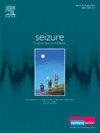生酮饮食对婴儿癫痫痉挛综合征的疗效和安全性:一项荟萃分析
IF 2.8
3区 医学
Q2 CLINICAL NEUROLOGY
引用次数: 0
摘要
目的系统评价生酮饮食(KD)治疗小儿癫痫痉挛综合征(IESS)的疗效和安全性。方法对电子数据库进行全面检索,以确定使用KD治疗IESS的预后研究。从符合条件的研究中提取数据,并使用随机效应模型进行meta分析。结果荟萃分析显示,在kd开始后3、6和12个月痉挛发作减少≥50%的儿童比例分别为63% (95% CI: 0.52-0.73)、66% (95% CI: 0.56-0.76)和60% (95% CI: 0.43-0.77)。在3个月、6个月和12个月时,分别有21% (95% CI: 0.11-0.32)、21% (95% CI: 0.12-0.30)和19% (95% CI: 0.08-0.31)的患者出现无癫痫发作。KD治疗还显著改善了脑电图(EEG)异常(OR: 54%, P < 0.01),并有助于增强运动、认知和语言发育(OR: 56%, P < 0.01)。常见的不良事件包括胃肠道问题(427/1313,32%)和内部环境紊乱(428/1313,32%),尽管大多数是轻微和可控的。证据主要是低确定性的,具有显著的发表偏倚。结论生酮饮食对抗癫痫药物无反应的IESS患儿是一种安全有效的治疗方法。本文章由计算机程序翻译,如有差异,请以英文原文为准。
The efficacy and safety of the ketogenic diet in infantile epileptic spasm syndrome: a meta-analysis
Objective
To systematically evaluate the efficacy and safety of the ketogenic diet (KD) in treating infantile epileptic spasm syndrome (IESS).
Methods
A comprehensive search of electronic databases was conducted to identify prognostic studies on the use of KD for IESS. Data from eligible studies were extracted and meta-analyzed using a random-effects model.
Results
The meta-analysis indicated that the proportion of children experiencing a ≥ 50% reduction in spasticity episodes at 3, 6, and 12 months post-KD initiation was 63% (95% CI: 0.52–0.73), 66% (95% CI: 0.56–0.76), and 60% (95% CI: 0.43–0.77), respectively. Seizure-free periods occurred in 21% (95% CI: 0.11–0.32), 21% (95% CI: 0.12–0.30), and 19% (95% CI: 0.08–0.31) of patients at 3, 6, and 12 months, respectively. KD treatment also significantly improved electroencephalogram (EEG) abnormalities (OR: 54%, P < 0.01) and contributed to the enhancement of motor, cognitive, and language development (OR: 56%, P < 0.01). Common adverse events included gastrointestinal issues (427/1313, 32%) and disturbances in the internal environment (428/1313, 32%), though most were mild and manageable. Evidence is predominantly low-certainty with significant publication bias.
Conclusion
The ketogenic diet is an effective and safe treatment option for children with IESS who are unresponsive to antiepileptic drugs.
求助全文
通过发布文献求助,成功后即可免费获取论文全文。
去求助
来源期刊

Seizure-European Journal of Epilepsy
医学-临床神经学
CiteScore
5.60
自引率
6.70%
发文量
231
审稿时长
34 days
期刊介绍:
Seizure - European Journal of Epilepsy is an international journal owned by Epilepsy Action (the largest member led epilepsy organisation in the UK). It provides a forum for papers on all topics related to epilepsy and seizure disorders.
 求助内容:
求助内容: 应助结果提醒方式:
应助结果提醒方式:


